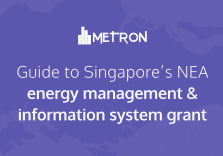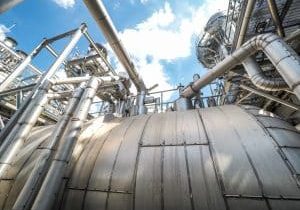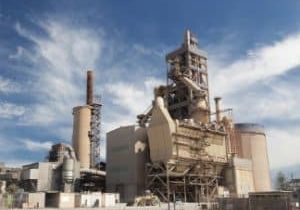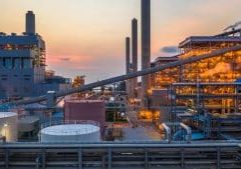In the United Kingdom, industry accounts for a quarter of greenhouse gas emissions1. Eight industrial sectors currently emit around two-thirds of industrial carbon emissions2: cement, ceramics, chemicals, food and drink and oil refining, but also the production of cement, ceramics, glass, iron and steel, and pulp and paper. To reduce these emissions, the British government is implementing an action plan to improve the energy performance of companies, especially in industry. What are the challenges involved? And how can they be tackled?
The commitment of the British government to improving energy efficiency in industry
To help businesses lower their carbon emissions, the British government has passed an investment plan of £315 million to reduce energy usage. This program will allow businesses to save £1 billion a year on their energy bills by 2030 by improving the energy efficiency of commercial buildings. It is also committed to the decarbonization of heavy industry with the aim of attaining carbon neutrality by 2050.
In this context, the IETF (Industrial Energy Transformation Fund) will help energy intensive industries increase their energy efficiency to reduce their energy consumption. The aim? To cut greenhouse gas (GHG) emissions by 2 million tonnes between 2028 and 2032 – the equivalent of taking nearly 200,000 cars off the road every year.
The ambitions of the IETF in practical terms
Energy intensive industries will have to implement energy efficiency deployment projects that meet strict specifications:
- estimate of energy consumption before and after the implementation of an action plan (with the number of kWh saved);
- implementation of energy savings on an industrial process;
- proof of the effectiveness of the technology deployed to make energy savings (tests, demonstrations and results);
- compliance with predefined standards and guidelines (e.g seasonal performance factor or ISO 50001).
For enhanced performance, the IETF encourages the renewal of equipment. However, to adequately plan for the renewal of tools, it is important to understand the impacts of the existing equipment and processes. Digitalizing the site is the first step. Collecting, aggregating and monitoring energy and process data provides information and transparency within a plant. Putting that information in the hands of the right people is critical to achieving real reductions in both energy and CO2.
Digital solutions to meet these ambitious targets
Digitalizing industry step by step
Decarbonizing industry is a major project that requires a range of actions from operating more efficiency today to implementing major de-carbonization technologies. And yet to ensure the success of the initiative, a key parameter needs to be taken into account: the economic reality. This is a key issue for manufacturers in order to reduce consumption while maintaining the quality and volume of production.
Most industrial sites generate data but their digital maturity varies. However, monitoring of a few carefully chosen Key Performance Indicators (KPIs) with powerful visual analytics already delivers significant benefits.
For more mature sites, the implementation of advanced monitoring allows users to go further in reducing energy consumption by identifying and managing the energy-critical elements of the manufacturing process in real-time. The goal is to reduce the amount of energy (and hence CO2) while ensuring the quality of the product is always maintained.
Need proof? Discover the infographic on the uses and role of digital in Energy Management.
Monitoring and optimizing its consumption
Energy is the pulse of industry. Developing an energy efficiency strategy is therefore a critical issue of growing importance. To reduce the energy costs and carbon footprint of industry, one of the most effective solutions is the use of digital tools enabling businesses to monitor their consumption in real time and therefore optimize it.
Choosing good indicators, compliance with standards, monitoring industrial processes using KPIs and estimating energy consumption are supported by digital tools. These operational solutions therefore help businesses follow the IETF specifications in order to optimize energy performance and thereby meet the targets set by the United Kingdom.
The investment drive of £315 million set out by the UK government aims to reduce GHG emissions by around 2 million tonnes between 2028 to 2032. Many manufacturers could benefit from this opportunity and commit to innovative energy management which involves multiple teams. In the drive for energy performance, digital tools have proved to be effective. And how do you manage your energy consumption? Are you ready to meet the challenge of achieving carbon neutrality by 2050?
--------
Sources: 1 and 2 “Heavy industry to cut 2 million tonnes of carbon emissions with new tech” press release from the British government [consulted on 30 October 2020].










